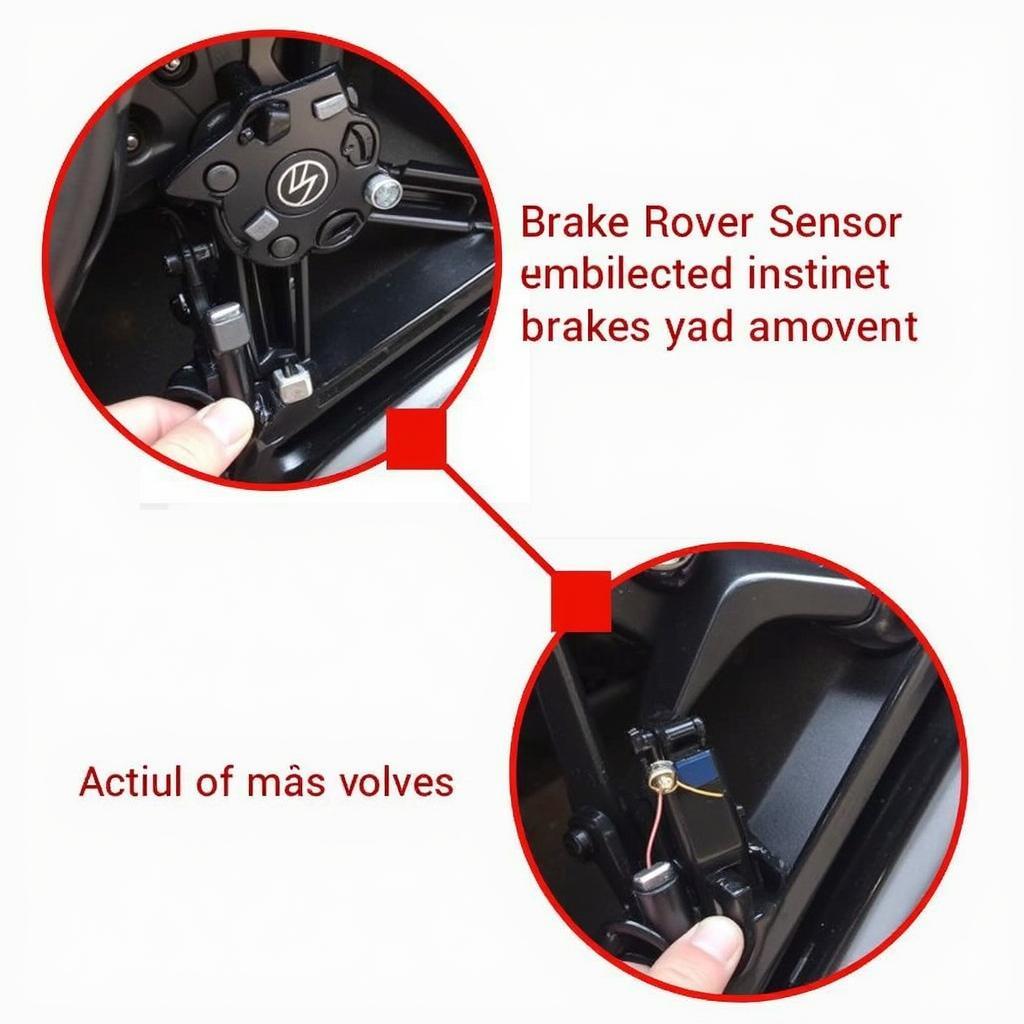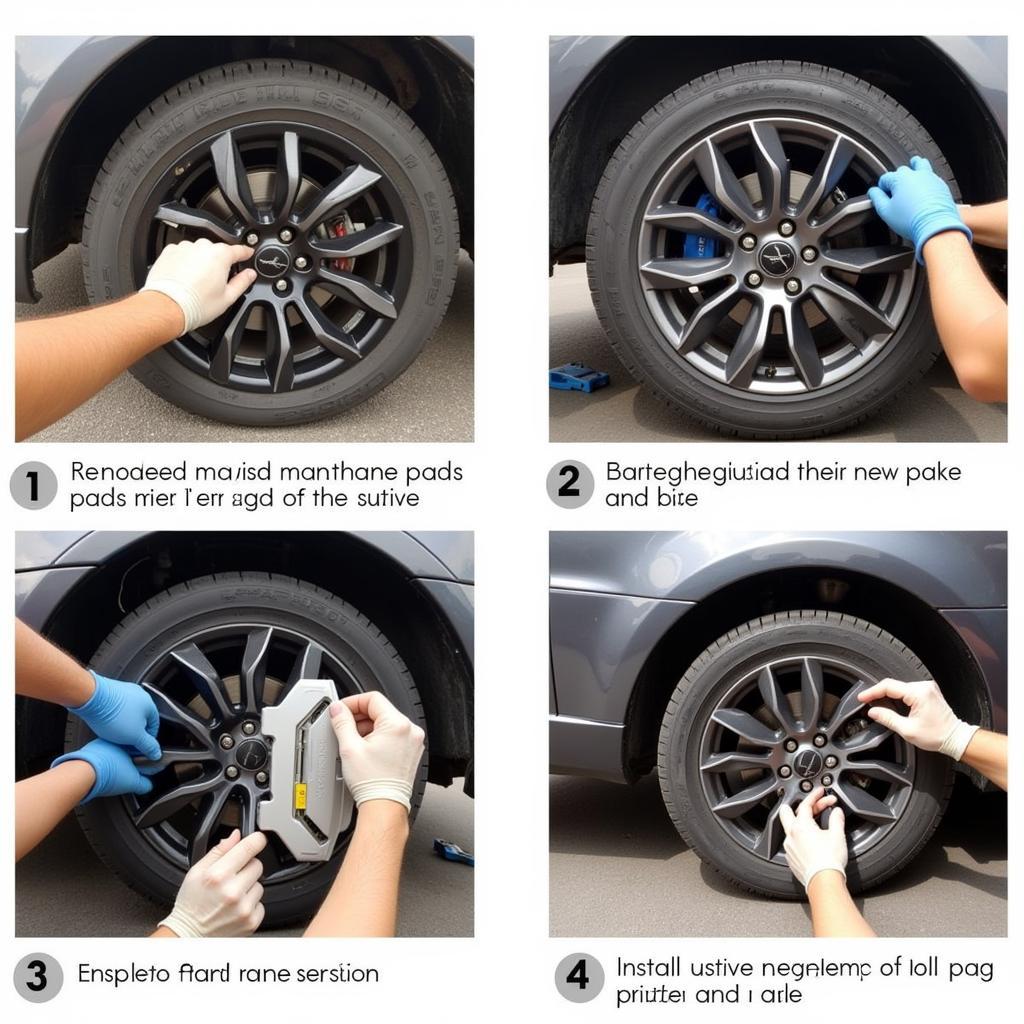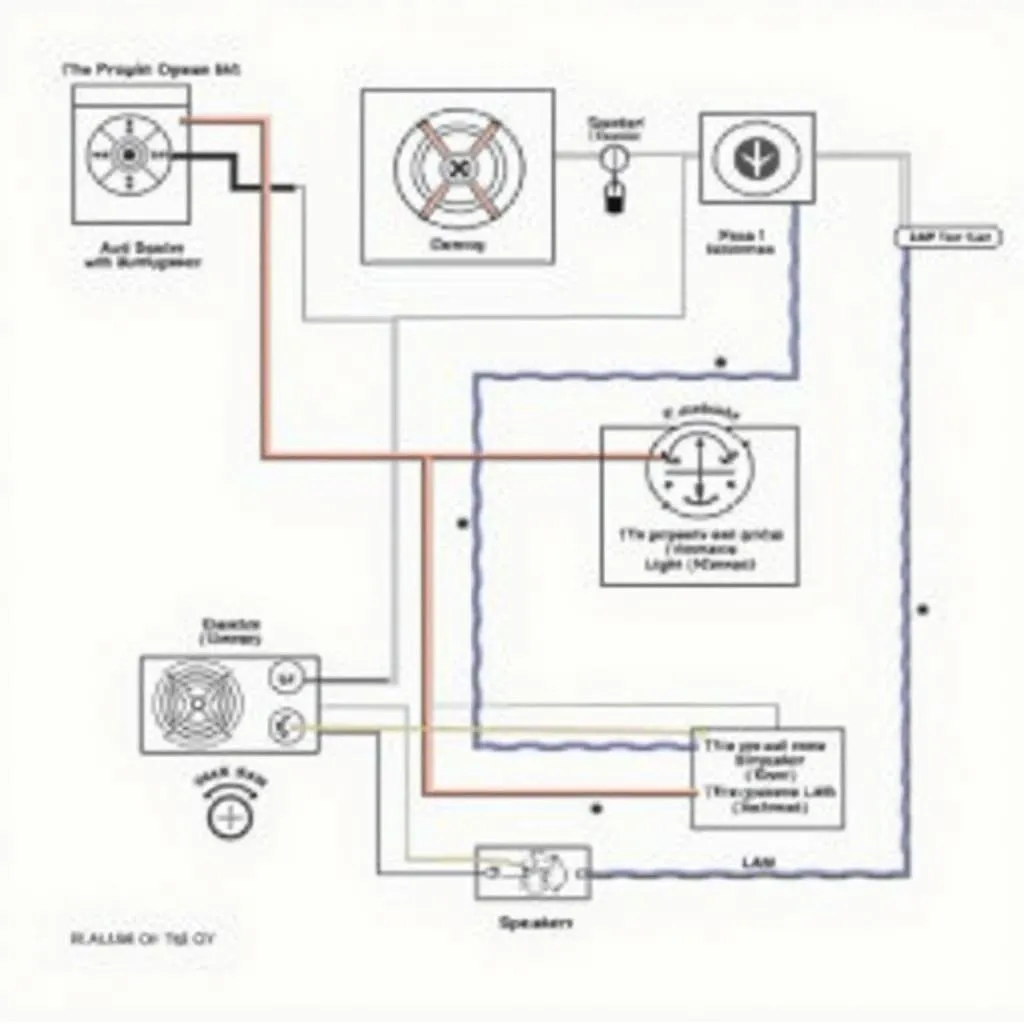The dreaded brake pad warning light on your 2015 Range Rover Sport. It’s a sight no driver wants to see, but understanding what triggers it and how to address the issue can save you time, money, and potential headaches down the road. This comprehensive guide will walk you through everything you need to know about the 2015 Range Rover Sport brake pad warning light, from diagnosing the problem to implementing solutions and even preventative measures.
Understanding the Brake Pad Warning Light
The brake pad warning light is part of your Range Rover’s sophisticated braking system. It’s designed to alert you when the brake pads are nearing the end of their lifespan and need replacement. Ignoring this warning can lead to further damage, reduced braking performance, and potentially dangerous driving situations.
What Causes the Warning Light to Illuminate?
The most common reason for the brake pad warning light is, unsurprisingly, worn brake pads. As your brakes are used, friction material wears down. When the pad material reaches a certain minimum thickness, a small sensor embedded within the pad makes contact with the brake rotor, triggering the warning light on your dashboard. However, there can be other reasons for the light to come on.
- Worn Brake Pads: This is the most frequent culprit.
- Faulty Brake Pad Sensor: Sometimes, the sensor itself can malfunction, triggering the light prematurely.
- Low Brake Fluid: While a separate warning light typically indicates low brake fluid, it can sometimes be accompanied by the brake pad warning light, especially if a leak is causing both issues.
- Wiring Issues: Damaged or corroded wiring in the braking system can also cause the light to illuminate erratically.
Diagnosing the Problem
When the brake pad warning light comes on, it’s crucial to diagnose the root cause promptly. Start by visually inspecting your brake pads. If you’re comfortable doing so, you can remove the wheel and caliper to get a clearer view. Look for significantly reduced pad thickness. If the pads look thin, they likely need replacement.
Checking the Brake Pad Sensors
If the pads appear to have sufficient material, then the next step is to inspect the brake pad sensors. These small wires are embedded within the brake pad material. Check for any damage, corrosion, or disconnections. A multimeter can be used to test the sensor’s continuity.
 Brake pad sensor on a 2015 Range Rover Sport
Brake pad sensor on a 2015 Range Rover Sport
Inspecting Brake Fluid Levels
Check your brake fluid reservoir. Low brake fluid can also contribute to braking issues and may be linked to the illuminated warning light. If the fluid level is low, top it off with the correct brake fluid specified in your owner’s manual. However, persistently low fluid indicates a leak, requiring professional attention.
Solutions and Repairs
Once you’ve identified the cause of the illuminated warning light, you can implement the appropriate solution.
- Replacing Brake Pads: If your brake pads are worn, replace them with high-quality replacements designed for your 2015 Range Rover Sport. This usually involves replacing the sensors as well.
- Replacing Brake Pad Sensors: If the sensor is faulty, replacing it is a relatively simple procedure. Ensure you use the correct sensor for your vehicle.
- Addressing Brake Fluid Leaks: If you suspect a leak, take your vehicle to a qualified mechanic immediately. Brake fluid leaks are serious and require professional repair.
- Repairing Wiring Issues: Damaged wiring within the brake system also necessitates professional attention.
“Regular brake maintenance is crucial for the safety and longevity of your Range Rover,” advises John Smith, Senior Automotive Technician at Prestige Auto Repair. “Addressing the brake pad warning light promptly prevents further damage and ensures optimal braking performance.”
 Replacing brake pads on a 2015 Range Rover Sport
Replacing brake pads on a 2015 Range Rover Sport
Preventing Future Issues
Regular maintenance is key to avoiding brake problems. Schedule brake inspections at recommended intervals and be mindful of your driving habits. Aggressive driving can wear down brake pads faster.
“Don’t ignore any warning lights related to your braking system,” warns Emily Davis, Certified Automotive Specialist. “Early diagnosis and repair can save you from costly repairs down the line.”
Conclusion
The 2015 Range Rover Sport brake pad warning light serves a vital purpose in ensuring your safety on the road. Understanding its function, diagnosing the underlying cause, and implementing the correct solution will help you maintain optimal braking performance and prevent more significant issues. Don’t ignore this crucial warning; address it promptly for a safer and smoother driving experience. Regular maintenance and timely repairs are key to keeping your Range Rover Sport in peak condition.

